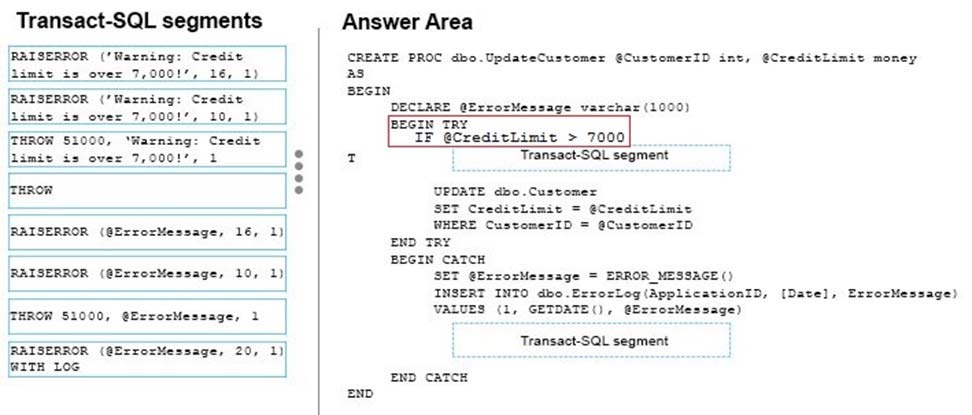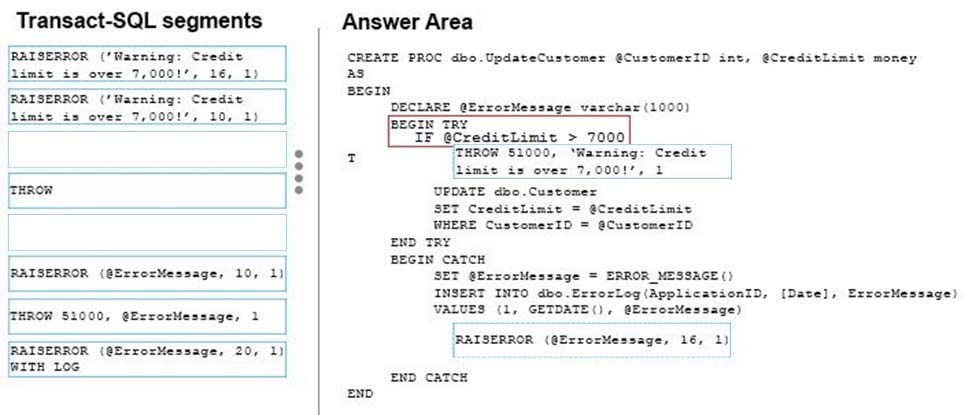

DRAG DROP -
You need to create a stored procedure that meets the following requirements:
✑ Produces a warning if the credit limit parameter is greater than 7,000
✑ Propagates all unexpected errors to the calling process
How should you complete the Transact-SQL statement? To answer, drag the appropriate Transact-SQL segments to the correct locations. Each Transact-SQL segments may be used once, more than once, or not at all. You may need to drag the split bar between panes or scroll to view content.
Select and Place:

M4x
Highly Voted 5 years, 9 months agoanonimdom
5 years, 5 months agoanonimdom
5 years, 4 months agoAshleyLiang
Highly Voted 5 years, 10 months agoBillybob0604
Most Recent 4 years, 5 months agoBillybob0604
4 years, 5 months agoVermonster
4 years, 6 months agoAghie
4 years, 11 months agoBacky
5 years agoAnette
5 years, 1 month agoAnette
5 years, 1 month agoAnette
5 years, 1 month agoAnette
5 years, 1 month agoAndi64
5 years, 4 months agoxd1
5 years, 2 months agoxd1
5 years, 2 months ago